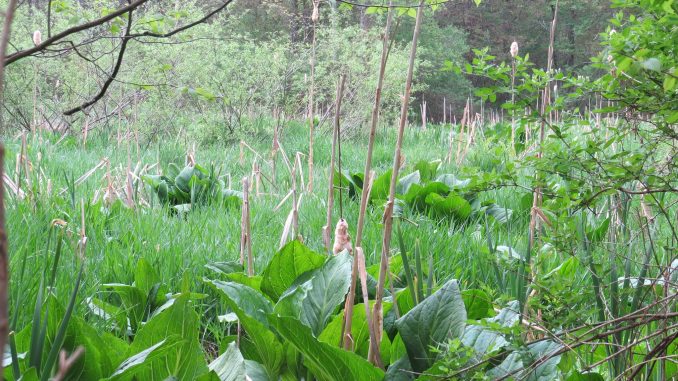
With the impending shutdown of the Catskill Aqueduct in 2017, both of the local government boards in New Paltz have discussed the future use and development of the Mill Brook Preserve.
A split has arisen on both the New Paltz Village Board of Trustees and the New Paltz Town Board, as discussions regarding the addition of the Mill Brook Preserve to the municipal water supply have expanded to involve its status as park land.
Some have supported a proposal to use the Preserve in conjunction with the already established Water District No. 5 Plains Road property. However, as stated in the Preserve’s conservation easement, “harvesting underground water will be banned from the Preserve except in extreme conditions when other unprotected sources of community water supply have been eliminated (or) exhausted.”
According to the 2014 Mill Brook Preserve Management Plan, the town and village split ownership of roughly 126 acres of “already conserved land, including 89 town-owned acres and 37 acres protected by conservation easements.” The Nature Conservancy defines a conservation easement as “a restriction placed on a piece of property to protect its associated resources.”
A 2015 resolution passed by the Town Board made oversight of the Preserve a joint effort between the town and the village. However, according to an article in The Daily Freeman, “an intermunicipal agreement drafted about two years ago, but never adopted, called for a uniform conservation easement to be approved by June 30, 2016.”
Village of New Paltz Mayor Tim Rogers has voiced his support for the plan to utilize the Preserve, while Village Trustee Tom Rocco stated that other resources should be explored before the Preserve is used.
“I support looking for a public ground water source on the west side of the Mill Brook Preserve outside of its core biodiversity area because of the area’s unique linear features identified by a hydrogeologist and a well driller during visits to the site,” Rogers said. “We used taxpayer money to acquire the Mill Brook [Preserve] and need to be mindful of as many taxpayer sensitivities as possible; including those of residents who prefer manageable water rates.”
New Paltz Town Supervisor Neil Bettez, an ecologist, said that the conservation easement is not as common for municipalities as compared to declaring the land as ‘park land.’ That being said, Bettez expressed little concern for the potential drilling for water in the Preserve.
“The upside to the easement is that it won’t let future town boards do anything that violates the agreement,” Bettez said. “It’s all about making the land worth it to the people.”
The costs for applying a conservation easement would not impact the municipality, Bettez said, as a local benefactor has stepped in to assume the costs. Bettez also said that town board member Marty Irwin, a member of the Clean Water and Open Space Protection Commission, has been a leading proponent for implementing a conservation easement.
Bettez said that the current conversation is part of a larger, more comprehensive one that would have taken place in the next two years anyways. He said that the discussions between the town and village have “laid out everything beforehand,” in order to address all potential issues.
“On the one hand, it has been a good conversation,” Bettez said. “But on the other hand, it has been a conversation that has created some conflict.”
